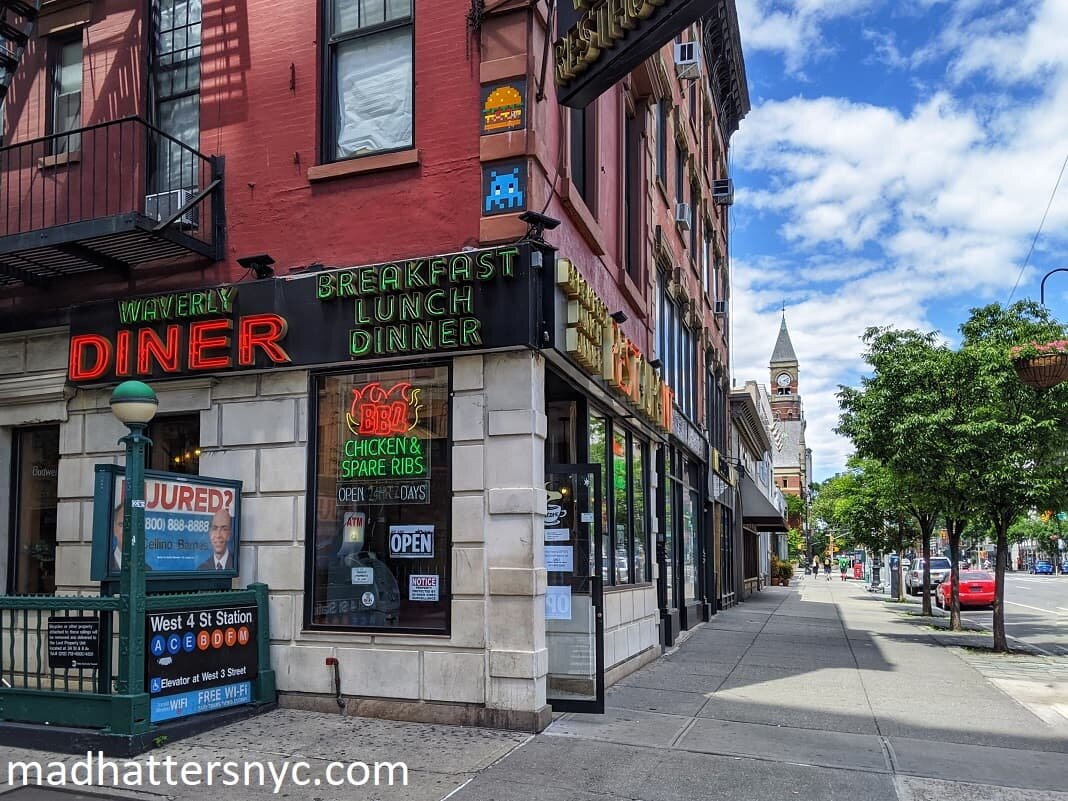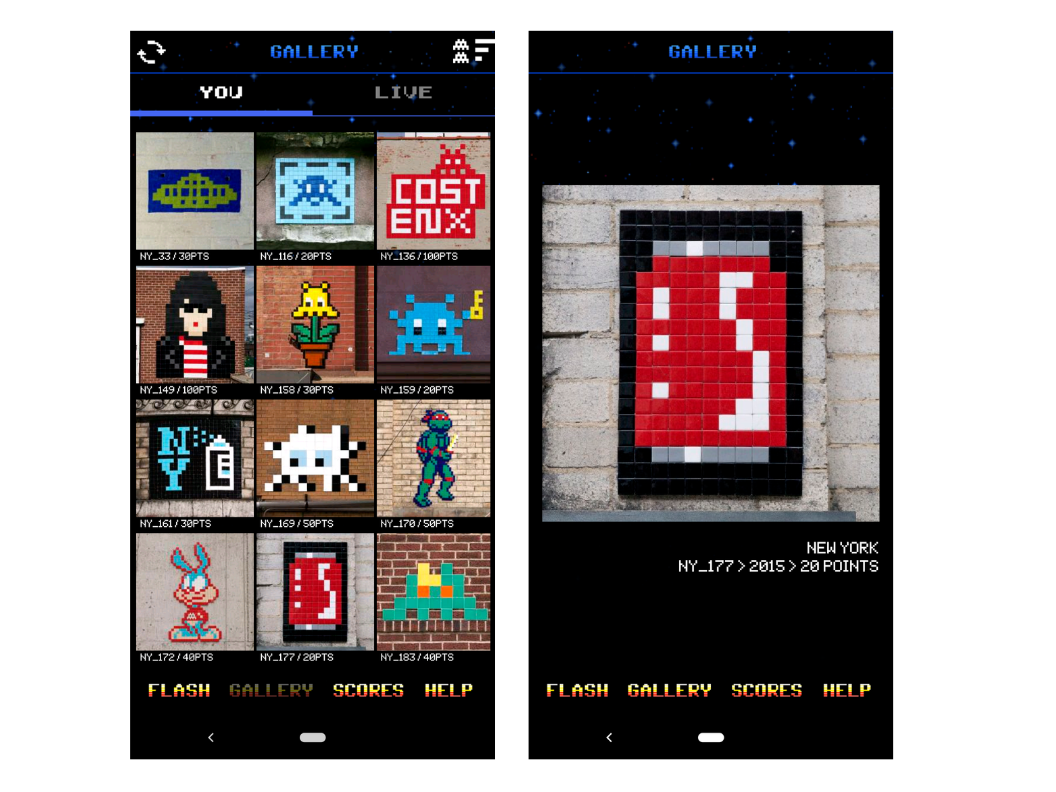French Street Artist Invader and Where To Find His Fun Mosaics in NYC
We are passionate adherents of street art for numerous reasons, not the least of which is its innate ability to completely change the urban landscape. We’re even greater admirers of individual artists or organizations who make the process of discovering art a way of also discovering the environment, an underappreciated neighborhood, an unheralded city block. We’ve highlighted organizations like Tiny Doors ATL and Ithaca Murals, who have made significant contributions in their communities. But for our money, no individual artist comes close to demonstrating this idea in scope or ambition more than the seminal French artist, Invader.
Who is Invader?
Invader is a French artist who is considered one of the early pioneers of the street art and graffiti movement. His contemporaries include such giants as Shepard Fairey and Banksy. Banksy’s 2010 documentary Exit Through The Gift Shop introduces viewers to Thierry Guetta and captures his metamorphosis from thrift store owner to street artist Mr. Brainwash. Within the first ten minutes of the documentary, Guetta explains that his obsession with street art began with his cousin, an artist making mosaic pieces and placing them on buildings to be discovered. That cousin is Invader.
How did Invader get his start?
In 1998, the movie Titanic won 11 Oscars, two Stanford grads founded Google, and Viagra was approved by the FDA. That same year, the first Invader mosaic appeared in Paris. Inspired by the Space Invaders arcade game (which was later licensed to Atari), the anonymous French street artist used simple ceramic tiles to simulate the video game aliens and strategically placed them around the capital city. The unconventional works of art started to pop up in other parts of France, then across the globe. “Invasion waves” could produce as many as 50 new creations at a time. Over time, his designs evolved, but Invader has never strayed from his signature pixelated style. Today, more than 30 countries are home to Invader mosaics.
Although he graduated from the prestigious École des Beaux-Arts fine arts school in Paris, Invader was wary of the cliquish art world. While he worked within its confines, he simultaneously sought to disrupt it. In his eyes, his mosaics presented an opportunity to share his art outside of the usual museum or gallery circuit. Invader succeeded in his mission to reach a wider audience, and soon his work caught the eye of avant garde galleries who recognized the growing value of street art. Like many of the OG street artists, Invader has chosen to keep his identity secret, electing instead to prioritize his message.
How does Invader work?
Invader started out by transforming pop culture into art, so it’s no surprise that it’s continued to remain central to his artistic evolution. Besides the Space Invader aliens that started it all, there have been Pac Man ghosts, Disney and Sesame Street characters, and even Big Lebowski’s The Dude. His aliens come in a multitude of colors, and they sometimes enjoy libations, wear crowns, or give you a big thumbs up.
Invader usually creates plaques with his tiled creations, then affixes them discreetly to carefully selected locations. Similar to other street artists, when he invades cities other than his own, he usually has a local helping him behind the scenes. They scout locations, and take necessary precautions to avoid legal ramifications. Graffiti is still considered vandalism in many countries, and could carry harsh penalties.
For larger works, he sometimes creates a sample in his studio prior to installation. The replica, which he calls an Alias, appears from time to time in his Space Shop, offering the rare opportunity to own an authenticated artwork. Today, street art can fetch hefty price tags at auction, making his public mosaics ripe for theft. In 2017, it was reported that thieves posing as city workers stole several of Invader’s mosaics from Paris. But just as Banksy’s pieces have no value unless he claims them, Invader’s mosaics are made of simple materials and often have to be reassembled once removed, rendering pilfering attempts worthless. Instead, Invader encourages enthusiasts to create their own personal artwork with one of his Invasion Kits.
What is Flash Invaders?
Invader considers the sum of all the mosaics that have been installed throughout the world to be part of a cohesive work of art. A singular “installation”, so to speak. The central idea of Invader’s mission is similar to that of breaking the fourth wall in performance art. Whereas a performer breaks through the wall of make-believe by acknowledging his audience in the theater, Invader dissolves the barrier between artist and patron by engaging them in the most unexpected way: with a smartphone application called Flash Invaders.
Flash Invaders essentially marries Space Invaders with Where in the World is Carmen Sandiego, sending Invader’s many devotees on a global scavenger hunt. By leveraging digital technologies, Invader created a database cataloging every piece of work he’s ever created and assigning each a score from 10 to 100. That score drives Flash Invaders, a companion iOS and Android app he designed himself and launched in 2014. Once downloaded to a smartphone, fans can track down and “flash” mosaics, earn points, and compete with fellow enthusiasts.
Flash Invaders points can only be earned by capturing the mosaics live. If successful, your conquest and its score is added to your gallery. A live gallery in the app also captures the latest successful flashes around the world, keeping his art fresh as its discovered by each new player. The app, whose interface is reminiscent of the original arcade game right down to its page of High Scores, is a fun game that doubles as a showcase of Invader's prolific work.
Pro Tip: Since many of Invader’s mosaics are placed above street level, point your phone’s camera at the mosaic and use the bar below to zoom in. This increases your chances of a successful “flash”.
Where can I find Invader mosaics in NYC?
Invader’s works span the globe, peeking out from under bridges and over entryways, in over 79 cities. He’s visited some locations repeatedly, and New York City was a target of his invasions in 2000, 2009, 2013, and most recently, 2015. In each city, Invader leaves several of his ubiquitous Space Invader aliens, but he also makes it a point to add mosaics that nod to something local.
In New York City, Invader’s pixelated Teenage Mutant Ninja Turtles watch over various pizza parlors. Mosaics depicting notable New Yorkers like Joey Ramone and Lou Reed grace the walls of Brooklyn and Manhattan. More than one Space Invader alien appears next to an apple. Invader even collaborated with famed New York City graffiti legend, Cost and his then “bombing partner”, ENX. Though not all of Invader’s mosaics have managed to survive New York City’s constant reincarnations, a shocking number still endure.
Use the map above as a jumping off point to discover his many treasures, and add them to your galleries before they disappear. Some mosaics are easier to spot than others, so we’ve included photos to help where we can. We know we’ve probably missed a few, so we welcome all tips!
If you’re not in NYC, Invader has a world map marking every one of the cities you can find his mosaics in.
Conclusion
Whether you’re looking to enjoy the weather on a beautiful day or just trying to increase your step count, Invader’s funky mosaics and his app, Flash Invaders, are the perfect answer. Think of it as a mix between a self-guided tour and a solo scavenger hunt. Get out and explore your surroundings at your own pace and discover areas you’ve never been to before, and perhaps, never would have visited otherwise.










